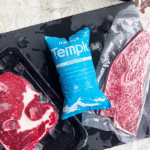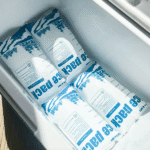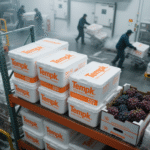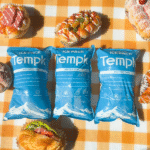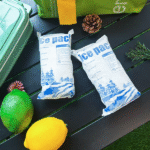Les packs de glace carbonique sont-ils sans danger pour les aliments pour l'expédition de denrées périssables?
Les packs de glace carbonique sont une solution largement utilisée dans l’industrie alimentaire pour expédier des produits périssables.. Leur capacité à maintenir des températures ultra basses les rend idéales pour conserver les aliments congelés pendant le transport.. Mais les packs de glace carbonique sont-ils sans danger pour les aliments? Cet article répond à cette question en explorant les propriétés de la neige carbonique, son utilisation dans la conservation des aliments, protocoles de sécurité, et les bonnes pratiques de gestion.
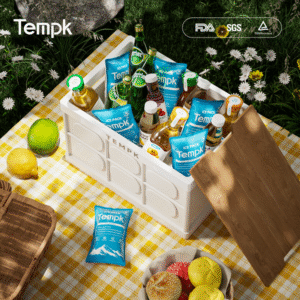
Que sont les packs de glace sèche, et pourquoi sont-ils importants pour la sécurité alimentaire?
Glace sèche, une forme solide de dioxyde de carbone (Co₂), se sublime directement en gaz à -78,5°C (-109.3°F), contourner la phase liquide de la glace normale. Cette propriété unique permet à la neige carbonique de maintenir des températures basses pendant de longues périodes, ce qui en fait un outil essentiel pour conserver les aliments surgelés pendant le transport. Cependant, manipulation appropriée est nécessaire pour assurer la sécurité.
Comment fonctionne la glace carbonique pour conserver les aliments?
La glace carbonique est extrêmement efficace pour prévenir la détérioration des aliments pendant le transport en maintenant l'état congelé., surtout pour les produits sensibles comme les glaces, viande, et fruits de mer. Pour ce faire, il maintient la température constamment en dessous de zéro., lequel empêche le dégel et la croissance bactérienne.
Les packs de glace carbonique sont-ils sans danger pour les aliments?
La glace carbonique elle-même est non toxique, mais cela présente des risques en raison de son froid extrême. Le contact direct avec la neige carbonique peut provoquer des engelures ou des brûlures par le froid sur les aliments., conduisant à des changements de texture indésirables, brûler le congélateur, ou même des dégâts alimentaires. Le principe de sécurité clé lors de l’utilisation de glace carbonique est de éviter le contact direct avec les aliments.
Meilleures pratiques d’utilisation de la glace carbonique dans le transport de produits alimentaires
Voici quelques directives cruciales pour garantir une utilisation sûre de la neige carbonique pour les applications alimentaires.:
-
Conditionnement & Séparation
Utilisez des contenants isothermes qui empêchent le contact direct entre la neige carbonique et les aliments. Assurer une bonne séparation en utilisant refroidisseurs de mousse, emballage de bulle, ou couches de carton. -
La ventilation est la clé
Utilisez toujours un emballage qui permet gaz CO₂ sublimé s'échapper. Évitez les conteneurs hermétiques, car ils peuvent causer accumulation de pression, ce qui pourrait être dangereux. -
Manipulation et stockage
Toujours porter gants cryogéniques et lunettes de sécurité lors de la manipulation de glace carbonique. Stocker la glace sèche des espaces bien ventilés, à l'abri de la chaleur ou de la lumière directe du soleil, pour éviter une accumulation dangereuse de gaz CO₂. -
Transport et conformité
Lors de l'expédition, assurez-vous que les véhicules sont bien ventilés pour éviter l’accumulation de CO₂. Suivez toujours les directives réglementaires pour l'expédition de matières dangereuses et inclure "Contient de la neige carbonique" étiquetage selon la réglementation.
Quelles alternatives à la glace carbonique sont disponibles pour une expédition sûre des aliments?
Bien que la glace carbonique soit efficace pour les expéditions plus longues, packs de gel et Matériaux à changement de phase (PCMS) sont de plus en plus populaires pour expéditions à court terme. Ces alternatives sont plus sûres et plus faciles à manipuler car elles n’impliquent pas de gaz CO₂ dangereux..
| Agent de refroidissement | Packs de glace sec | Packs de gel | PCMS |
|---|---|---|---|
| Contrôle de la température | Extrêmement froid (-78.5°C) | Froid modéré (0° C à -20 ° C) | Personnalisable pour des gammes spécifiques |
| Sécurité | Nécessite une manipulation spéciale; dangereux | Non toxique, à sa sécurité | Non toxique, sans danger pour le contact direct |
| Durée | Longue durée (12-48 heures) | Durée plus courte | Plus long que les packs de gel, mais varie |
| Impact environnemental | CO₂ EMISSIONS | Biodégradable ou recyclable | Biodégradable, écologique |
Solutions hybrides: Combinaison de packs de glace carbonique et de gel
Pour les envois qui nécessitent les deux surgélation et réfrigération, combiner de la neige carbonique avec des packs de gel peut créer un environnement de température stable. Cette solution hybride fonctionne particulièrement bien pour temps de transit plus longs, garantir que les produits alimentaires sensibles restent congelé ou réfrigéré sans risque de décongélation rapide.
Erreurs courantes et comment les éviter
-
Ne stockez jamais de glace sèche dans des contenants hermétiques – Le gaz CO₂ doit s’échapper pour éviter une accumulation dangereuse de pression.
-
Évitez le contact direct avec la nourriture – Utilisez des couches isolantes entre la neige carbonique et les aliments pour éviter les brûlures de congélation.
-
Porter un équipement de protection – Ne manipulez jamais de glace carbonique à mains nues. Utiliser gants isolés et lunettes de sécurité.
Comment expédier en toute sécurité différents types d'aliments
Fruits de mer surgelés (24-36 heures):
Combiner glace carbonique avec packs de gel. Placer les fruits de mer dans une pellicule plastique hermétique, puis entourez-le de packs de gel et d'une couche de neige carbonique (Séparé par carton).
Kits de repas (24 heures):
Utiliser packs de gel et un doublure isolée pour maintenir la température de réfrigération appropriée. Placez un pack de gel au-dessus et un en dessous des aliments pour un contrôle équilibré de la température..
Vaccins (48-72 heures):
Utilisez des conteneurs d'expédition médicaux certifiés avec ventilation intégrée, combinant glace carbonique avec PCMS pour maintenir une température constante.
2025 Tendances en matière de chaîne du froid et d’utilisation de glace carbonique
Le marché de l'emballage sous chaîne du froid devrait croître à partir du dollar 29.1 milliard dans 2025 en USD 50.5 milliard par 2035. Les principales tendances qui façonnent l’avenir de l’utilisation de la neige carbonique dans le transport de produits alimentaires comprennent:
-
Matériaux durables – Utilisation de biodégradable et recyclable packs de gel et matériaux isolants.
-
IoT & Surveillance en temps réel – Intégration de capteurs et Tags RFID pour surveiller la température des aliments tout au long du processus d'expédition.
-
Des solutions d'emballage plus intelligentes – Les progrès dans Matériaux à changement de phase pour un meilleur contrôle de la température.
Conclusion & Recommandations
Les packs de glace carbonique sont un sûr et efficace solution pour l'expédition de produits surgelés, à condition que contact direct avec les aliments est évité, et consignes de sécurité sont suivis. Utilisez toujours conteneurs isolés, assurer ventilation, et porter un équipement de protection pour prévenir les blessures. Pour expéditions plus courtes, packs de gel et Matériaux à changement de phase sont des alternatives viables.
Agissez dès aujourd’hui:
-
Évaluer vos besoins d'expédition: Choisissez de la glace carbonique pour les articles surgelés, packs de gel pour produits réfrigérés.
-
Assurer un emballage approprié: Utilisez des boîtes isothermes et séparez la neige carbonique des aliments.
-
Éduquez votre équipe et vos clients: Fournir des instructions de manipulation et des avertissements de sécurité.
À propos du tempk
Tempk est un fournisseur de confiance de Solutions de glace sèche et Emballage de la chaîne froide pour l'industrie agroalimentaire. Nous sommes spécialisés dans la création sûr, efficace, et écologique des solutions d'expédition pour garantir que vos produits restent frais du point A au point B. Contactez-nous dès aujourd'hui pour plus de détails sur la façon dont nous pouvons aider votre entreprise à maintenir l'intégrité de votre chaîne du froid..



















